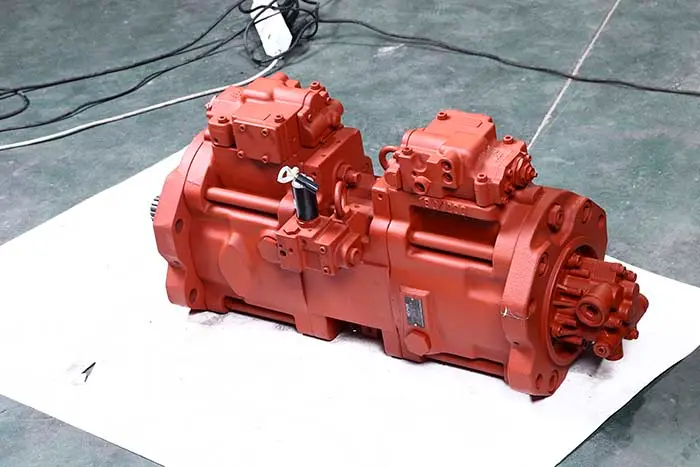Kawasaki Hydraulic Industry's installation requirements and precautions for hydraulic pumps
Kawasaki Hydraulic Industry's installation requirements and precautions for hydraulic pumps
When the hydraulic pump is arranged on a separate tank, there are two installation methods: horizontal and vertical. Vertical installation, pipes and pumps are all inside the oil tank, which is convenient for collecting oil leakage and has a neat appearance. Horizontal installation, the pipes are exposed outside, which is more convenient for installation and maintenance. Hydraulic pumps are generally not allowed to bear radial loads, so motors are often used to drive directly through elastic couplings.

When installing, it is required that the shaft of the motor and the hydraulic pump should have a high concentricity, the deviation should be less than 0.1 mm, and the inclination angle should not be greater than 1°, so as to avoid increasing the extra load of the pump shaft and causing noise. When a belt or gear drive must be used, the hydraulic pump should be relieved of radial and axial loads. Hydraulic motors are similar to pumps, and some motors are allowed to withstand a certain radial or axial load, but should not exceed the specified allowable value.
It is usually stipulated that the installation height of the oil suction port of the hydraulic pump is not more than 0.5 m from the oil level. Some pumps allow a higher oil suction height, while some pumps require that the oil suction port must be lower than the oil level, and individual pumps without self-priming ability need to be provided with an auxiliary pump to supply oil.
The installation of hydraulic pump should also pay attention to the following matters:
①The inlet, outlet and rotation direction of the hydraulic pump should meet the requirements marked on the pump, and should not be reversed.
②When installing the coupling, do not knock the pump shaft hard, so as not to damage the pump rotor.
Installation of auxiliary components:
The auxiliary components of the hydraulic system include: oil pipes, pipe joints, oil filters, accumulators, oil tanks, cooling and heaters, sealing devices, pressure gauges, pressure switches, etc. Auxiliary components play an auxiliary role in the hydraulic system, but they should not be ignored during installation, otherwise it will seriously affect the normal operation of the hydraulic system.
The installation of auxiliary components (the installation of pipelines has been introduced before) mainly pay attention to the following points:
①It should be installed in strict accordance with the position required by the design and pay attention to neatness and beauty. ② Before installation, use kerosene for cleaning and inspection. ③Convenience of use and maintenance should be considered as much as possible under the condition that the design requirements are met.
This article is published by the official website of Baolilai Hydraulics, please contact the author and indicate the source for reprinting:https://www.baolilai-pump.cn/news/232.html






